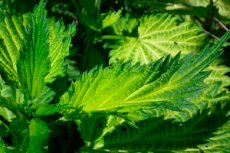Medical expert of the article
New publications
Preparations
Nettle bilberry for coughing in bronchitis
Last reviewed: 04.07.2025

All iLive content is medically reviewed or fact checked to ensure as much factual accuracy as possible.
We have strict sourcing guidelines and only link to reputable media sites, academic research institutions and, whenever possible, medically peer reviewed studies. Note that the numbers in parentheses ([1], [2], etc.) are clickable links to these studies.
If you feel that any of our content is inaccurate, out-of-date, or otherwise questionable, please select it and press Ctrl + Enter.

Stinging nettle is a popular plant that many fear like fire for its stinging properties and painful blisters on the skin. Yes, this is a side effect of close contact with this medicinal plant. But the benefits from it are incredible, and not only in cosmetology. For example, for colds and bronchitis, various parts of the plant can be used as an anti-inflammatory and expectorant for coughs.
Dosing and administration
If someone managed to catch a disease in the warm season, fresh juice of the plant, prepared from young shoots with leaves using a juicer, can be used to treat a cough. Fresh juice of the plant has an anti-inflammatory, expectorant, antipyretic effect, stimulates metabolism and tissue regeneration. For cough, juice should be taken three times a day. Single dose - 1 tsp.
Freshly prepared nettle juice retains its properties for no more than a day if stored in the refrigerator. But the juice can easily be replaced with a pharmacy extract, taking 35-35 drops at a time.
To treat chronic cough, you can use syrup from nettle roots. Finely chopped fresh roots of the plant are soaked in cold water for 10-15 minutes, then mixed with sugar syrup and boiled for 5 minutes. For 100 g of fresh roots, take 100 g of water and 3 tbsp. sugar.
Sometimes, instead of sugar, it is recommended to use honey, which is not entirely correct, because when boiled, honey not only loses most of its properties, but even becomes harmful to the body due to its carcinogenic effect.
The finished syrup should be taken three times a day, 1 tablespoon at a time. This remedy is effective even for the most persistent cough.
For cough, you can also drink tea made from dried nettle flowers. Take 1 teaspoon of crushed dry raw material per glass of boiling water. Infuse the mixture for 20-25 minutes. There are no restrictions on the use of such a drink.
Contraindications
Despite its stinging properties, nettle is generally a harmless plant if taken with consideration of contraindications and in recommended dosages. It is not recommended to take nettle remedies in the first trimester of pregnancy, with atherosclerosis of blood vessels and pathologies in which the blood has high viscosity and is prone to thrombosis, with severe kidney pathologies, arterial hypertension, all kinds of bleeding in neoplasms.
 [ 3 ]
[ 3 ]
Side effects nettles
Side effects from the use of nettle are observed only in isolated cases. These may be allergic reactions or gastrointestinal disorders in the form of nausea and diarrhea.
Storage conditions
Many people believe that nettle leaves should be collected in the spring, when the plants have just begun to come to life and their leaves are tender and light. In fact, nettles should be harvested in the summer from June to August, when the plant is in bloom. You need to pick off the leaves at the tops of the branches or mow the shoots, and then thresh them after drying.
Nettle roots are harvested in spring or autumn, and seeds – after flowering.
Dry the raw material in the shade, spreading it in a layer no more than 4 cm and shaking it regularly so that it does not rot. Nettle cannot be dried in the sun, as this causes it to lose vitamins. It is also undesirable to dry the raw material in a dryer, and if you still have to, the temperature should be no more than 35 degrees.
Nettle should be stored in paper, wooden or cardboard containers for no more than 2 years. Ground nettle leaves can be stored in glass containers, but the shelf life in this case will be only 1 month.
 [ 12 ]
[ 12 ]
Attention!
To simplify the perception of information, this instruction for use of the drug "Nettle bilberry for coughing in bronchitis" translated and presented in a special form on the basis of the official instructions for medical use of the drug. Before use read the annotation that came directly to medicines.
Description provided for informational purposes and is not a guide to self-healing. The need for this drug, the purpose of the treatment regimen, methods and dose of the drug is determined solely by the attending physician. Self-medication is dangerous for your health.

